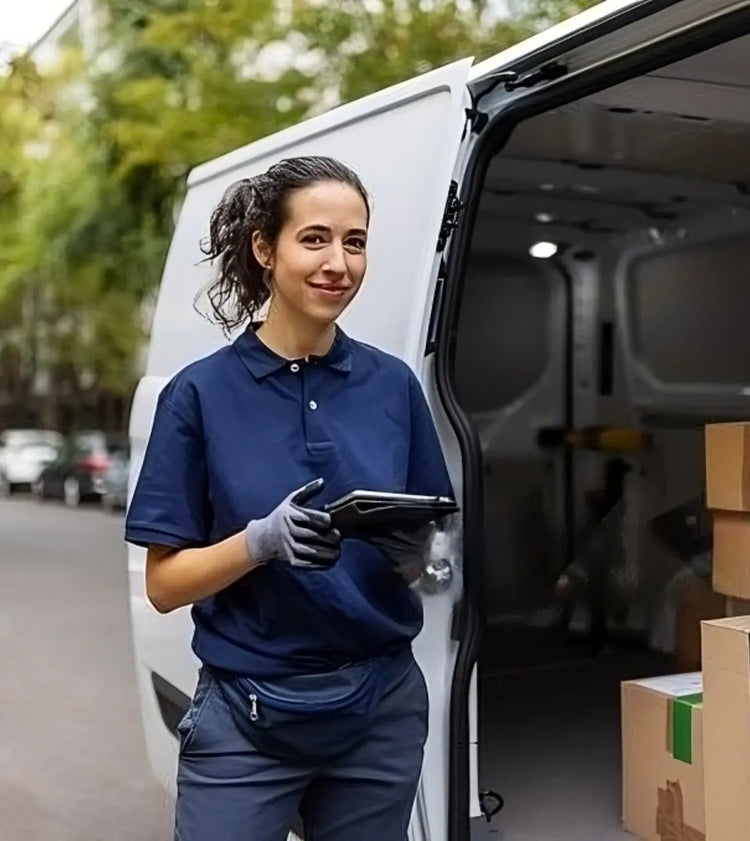
How To Prep Your Items for Long-Term Storage

Share
To prep your items for long term storage, you’ll need to clean, dry and pack them properly.
Long-term storage can be a lifesaver when you're downsizing, moving, or just need to store seasonal or sentimental items.
However, if you don’t prepare them properly, this could lead them to be damaged when you finally need them again.
Here, we tell you everything you need to know about how to pack, store, and organise your items for long-term storage, so you can be sure that they stay in great condition.
Why Does Preparation Matter For Long Term Storage?
When you store items for long periods of time, especially in storage units, they can get damaged if they aren’t prepared properly.
Dust, pests, mould, humidity and breakages from bad packing are all risks to contend with. Taking the proper time to prepare protects your things and gives you peace of mind.
Not to mention, looking at your items before they go into storage means you’re less likely to pay for a bigger storage unit than you need. By working this out at the start, you can save yourself a lot of money in the long run.

Step 1: Evaluate Your Long-Term Storage Needs
Create An Inventory
When you store items for long periods of time, you can start to lose track of what you’ve put away. Not to mention, it can be hard to know how much storage you need in the first place.
Start by creating a detailed list of everything you plan to store. Categorise items by type (e.g., furniture, clothes, electronics) and make a note of any useful information like size, fragility and any items of high value.
This will not only help you in the packing stages, but can also help you work out how much storage space you are likely to need and what insurance you should take out.
Measure
Measure large items and work out the number of boxes you’ll need for smaller things. Think about disassembling furniture to save space and how you can package things together to minimise the amount of boxes you have.
Having this will help you choose the right storage unit size.
Step 2: Choose the Right Long-Term Storage Solution
Depending on how much (or how little) you have, you can then make a decision about what type of storage you need. Some options include:
Self-Storage Units
Self-storage units are good for most storage needs and come in various sizes. If you’re storing sensitive items like antiques or electronics, choose climate-controlled units to protect against temperature and humidity.
Portable Storage Containers
Portable storage containers can be delivered to you and used to store items in lofts or basements. These are perfect for gradual packing or if you don’t have immediate access to a storage facility.
Storage By The Box
If you don’t have enough items to fill an entire unit, consider companies like The Box Co. that specialise in storage by the box.
This allows you to pay only for the items you want to store, rather than a whole unit. Not only does this save money, it also provides flexibility if you want to keep moving items in and out of storage.
Step 3: Clean and Prep Your Items
Next, it’s time to get your items ready.
Clean and Dry Everything
Before packing, make sure all items are cleaned and dried to stop mould and any bad smells from developing. Sterilisation is important to prevent any growth on the items, and drying them prevents damp from developing. This is particularly important if you are storing furniture, clothing or boxes of books.
Here are some tips for common items:
Clothing
- Wash and dry thoroughly.
- Use airtight bins with silicon packets to absorb moisture.
Electronics
- Store in original packaging when possible.
- Wrap in anti-static bubble wrap and remove batteries to prevent them leaking and breaking the item.
- Don’t place electronics directly on the floor just in case of any flooding.
Furniture
- Polish and condition wooden and leather furniture to protect against cracking.
- Cover with materials like blankets or cloth that allow the wood to breathe, but protect against dust.
- Store off the ground.
Books
- Pack in airtight boxes to avoid mould building up.
- Store in a cool, dark and dry environment.
Photographs and Artwork
- Pack photos in albums or containers designed to protect them long-term.
- Wrap them in bubble wrap to prevent any damage, especially if they are framed.
Disassemble Large Items
For bulky furniture, disassemble bed frames and dining tables so they can be stored more easily. Keep screws, bolts, and small parts in labelled plastic bags taped to the items so you can reassemble them easily.
Step 4: Invest in Good Packing Materials For Long Term Storage
Using high-quality packing materials means your things will stay well protected. Low-quality boxes can collapse or disintegrate over time, putting your items at risk of damage.
Wrap fragile items like glassware and mirrors in bubble wrap or packing paper. Use sturdy boxes, especially if you are planning to stack them, to avoid them falling in on themselves.
Recommended materials include:
- Sturdy cardboard boxes or plastic storage bins
- Bubble wrap, packing paper, and packing peanuts for fragile items
- Furniture covers or blankets to prevent dust build up
- Tape and permanent markers for labelling
Top tip: Don’t use plastic bags, as they trap moisture and can cause mildew to build up.
Step 5: Get Packing
Next, you’ll want to pack in a way that will benefit you when you want the items back. You should:
Pack by Category
Organise your things by room or category (e.g., kitchen, books, clothing). This makes it easier to get them back in a useful order later on.
Make sure you label anything fragile and avoid packing it with heavier items.
Use Consistent Box Sizes
Uniform box sizes make stacking easier and more stable. Avoid overpacking the boxes to stop them from collapsing or becoming too heavy to lift.
Most storage companies will have options to buy these boxes directly from them, so you don’t have to look too far.
Label Everything!
It sounds obvious, but it’s worth doing!
Clearly label each box with what’s inside it and the room it belongs to. You can even create a bigger inventory with a numbered system that makes the boxes easier to track.
Step 6: Arrange Your Storage Unit
Once you’ve chosen your storage solution and packed your items, it’s time to organise the storage unit.
If you’ve opted for storage by the box, the selected company will do the below for you, so feel free to skip to the next step.
However, if you’re setting up your own unit..
Create a Walkway
Leave an aisle down the middle of your unit so it’s easy to access items without having to rearrange everything.
Place items you’re likely to need first near the front, in a clearly labelled box.
Store heavy items at the back of the room and make sure they are stable if stacked.
Stack boxes with the heaviest on the bottom and the lighter ones on top.
Keep your belongings off the floor by using pallets - this can help protect them against potential flooding or ground moisture that could damage them.
If you can, use shelves too to help you keep the unit organised and have more items off the ground.
Step 7: Ask About The Unit’s Environment
Depending on what you’re storing, you might want to look for certain qualities in a storage unit, such as:
Climate Control
Temperature- and humidity-controlled units are important if you’re storing items like electronics, documents, and furniture.
This stops them being damaged from extreme temperatures or moisture.
Pest Protection
Avoid storing food or perishable items to avoid any pests coming in. Use mothballs or cedar blocks if you are storing clothes, to keep moths away without using harsh chemicals.
And most importantly, make sure all boxes are sealed to keep pests out!
Step 8: Regular Maintenance
Once your items are in storage, you’re likely to not need to think about them for a while.
However, it’s important that you visit your storage unit every few months to make sure no pests, water damage or other issues like theft have occurred. If they have, finding out about it sooner rather than later can be a lifesaver.
If you’re opting for storage by the box, consult the company regularly to check in on your items - though they are likely to be keeping a close eye for you!
And of course, make sure your belongings are insured so you can have peace of mind, even if something does go wrong.
Packing For Long-Term Storage - How To Prepare
Proper preparation can help keep your items safe during long-term storage.
By cleaning them, packing them properly and storing them efficiently, you can make sure they stay safe, organised, and in excellent condition.
With the right approach, long-term storage can be a great way to manage your space and belongings.
If you are looking for long-term storage solutions, charged by the box, visit The Box Co. and get a free quote today.



